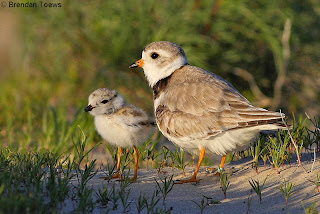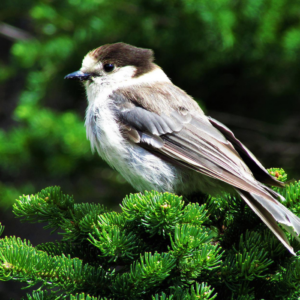Piping Plovers at Sauble Beach – Educating Beachgoers
May 30, 2012
Nature Canada supporters and volunteer Piping Plover guardians, Kim and Brendan Toews, have been providing us with updates on the return of Piping Plovers to Sauble Beach in Ontario for several years. Here is their second update for the 2012 season:
The Ontario Ministry of Natural Resources and Town of South Bruce Peninsula officials have posted signs and roped off both nesting sites to reduce disturbances to plovers sitting on nests. Exclosures have been placed over the nests to keep out predators, such as gulls and crows, while allowing the plovers to come and go. Both pairs of plovers are entering the exclosures, a positive sign that they have accepted them.
On the Victoria Day Weekend, large crowds of beachgoers, brought out by the hot and sunny weather, lounged on the beach metres away from the south and north end nests. On-site volunteer monitors are on the beach investing a lot of their time and energy into these recovery projects. They have had training about how to monitor the plover behaviour and educate the public about the situation. The vast majority of beachgoers are positive about the birds being here.
Piping Plovers use a lot of Sauble Beach, not just the areas around the nests. Enjoy the experience of seeing an endangered species in its habitat, but remember that your presence can influence plover behaviour. Continue walking through an area and observe the plovers from a distance using binoculars, spotting scopes or cameras with high-powered zoom lenses. By not lingering close to the plovers, you will minimize disturbance. Please give them space, and do not approach Piping Plovers on purpose. Volunteer monitors will assist in helping you.
North nest:
Adults are now taking turns continuously incubating over the next month.
South nest:
19 May – One egg was laid in a nest on the open beach and was discovered by a monitoring guardian early this morning. The area was quickly cordoned off from the public. This pair selected a location that is much further south than where the Piping Plovers have traditionally nested. Once there is a full clutch of 4 eggs in the nest, the adults will take turns continuously incubating.
Thanks for the update Kim and Brendan! Read their first report of the year here.




